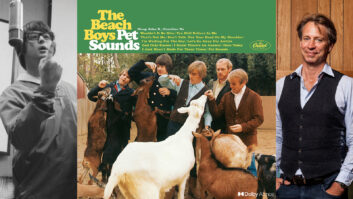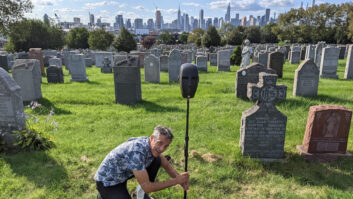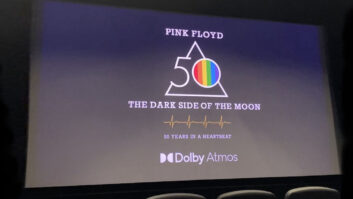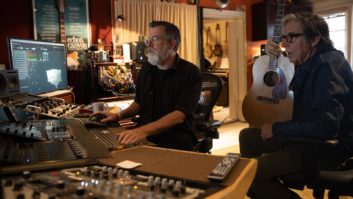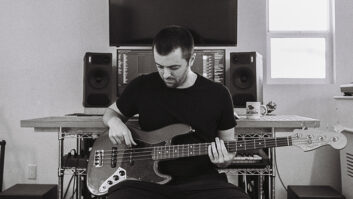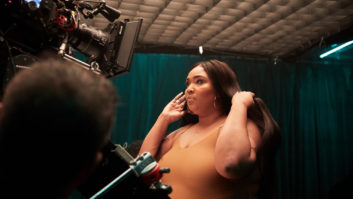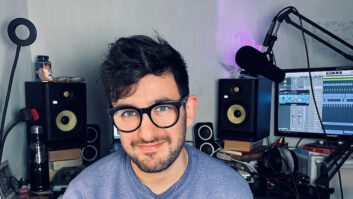
My introduction to writing about sound for film and television, and most of the emphasis over the years, has been through post-production. Primarily, I was educated by supervising sound editors, sound designers and re-recording mixers; those who craft the final soundtrack that we hear. I have found them, one and all, to be immensely creative people. They hear the whole symphony of a film at once—dialog, effects and music—and each time they come up with a new way to guide the audience through the experience. Each time with different sources.
From Mark Mangini I learned that you can make Robby Benson sound like a Beast by working in lion growls and camel hisses. Gary Rydstrom once explained to me how the recording of dog food oozing out of a can upside-down can form the basis of a T-1000 sliding through metal, or the crunching of pistachios between two pieces of China can come remarkably close to a team of Terminators walking over a field of skulls and skeletons. I once saw first-hand how David Lynch, with his hands on the faders of a Euphonix console at Digital Sound & Picture, made no distinction between music and effects when blending in Trent Reznor “drones” or an oboe recorded through a 50-feet PVC pipe by Angelo Badalamenti.
I could add a thousand more examples of the creative use of sound sources in the making of a complete film soundtrack, a complete sound “experience.” But I won’t. The one common thread, however, is that every single sound designer I’ve talked to over the past 30 years speaks of sound effects, sound design and sound mixing in musical terms. The musicality of the everyday world. Or the invented world.
Granted, in post-production, you can create that everyday world entirely in a studio, in a controlled environment limited these days—with the tools and libraries available to most anyone—only by your imagination. There is a caveat or two, however, if you want to play at the high end of film and television sound. And one of them might be, for example: If you want to land the sound job on Ford v Ferrari, you’re going to eventually have to go out with a microphone and recorder and find a real Ford GT40 Mk II and Ferrari 330 P3.
That is why I’ve come to discover that production sound mixers and field recordists are truly one of the pillars of film sounds. Larry Blake turned me on to two of the masters of field recording, Eric Fasal and John Potter, who, besides delivering mix-ready recordings of authentic bulletbys, engine roars, door slams or machinery grinding, will also provide a treasure trove of root sounds that might make it into the effects track in one way or another.
A-list supervising sound editor and sound designer Wylie Stateman has a special relationship with production sound mixer Mark Ulano, who provides a wealth of extraneous sounds from production and often provides Stateman with access to the set in order to get the real sounds, from the real world.
I was once told that Richard King, a four-time Oscar winner for Best Sound Editing, takes a microphone and recorder with him nearly everywhere he goes, even on vacation.
Which brings us, albeit in an odd, tangential way that might only make sense in my own mind, to Finneas O’Connell, the super-hot producer/artist/songwriter on this month’s cover. I’ll admit to knowing very little about him when Lily Moayeri, who wrote this month’s excellent feature story, proposed the idea of putting him on the cover. Of course I knew that Billie Eilish was his sister; I’ve since learned so much more. My sense is that he simply hears the world in a different way.
“All the sauce in my whole world is building my own sound libraries,” he says. “Carrying a Tascam DR-05 recorder around, recording samples, loading the samples into Native Instruments Battery in Logic, and playing them on an Akai MPK Mini mkII keyboard.” He’s recorded crosswalk signals, staplers, a match lighting… they’re all on Eilish’s smash multiple Grammy-nominated When We All Fall Asleep, Where Do We Go?
O’Connell is a completely self-taught musician-producer, one who grew up on YouTube with a computer as his main instrument. He can certainly speak the language of music; he plays keys and has a knack for the sound of drums and guitar. But my guess is that he doesn’t approach composition from the point of view of the orchestra. It’s more like the real world, the one he inhabits.
There is music out there in the world, in the click-clack of an El, the crackling of a campfire, or the cacophony of a crowded theater. You just have to hear it.
